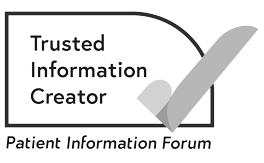Mind-body therapies
What are mind-body therapies?
Mind-body therapies are based on the belief that what we think and feel can affect how our bodies function. They have no effect on the cancer, but they may be used to help support people with cancer. They may help a person feel relaxed and improve their sense of well-being.
The mind-body therapies used by people with cancer in the UK include:
- relaxation techniques
- meditation
- mindfulness
- hypnotherapy
- sophrology
- creative therapies such as art therapy, creative writing and music therapy
- movement therapies, such as tai chi and yoga.
Mind-body therapies may help you feel less anxious, improve your mood and help you sleep. They may also help with symptoms such as pain, or help you cope with side effects caused by cancer treatment.
You may need to practise mind-body techniques regularly over a period of time to get the best results. You may find it helpful to attend a group to do the techniques. You can encourage each other to keep practising and see the progress you are making.
Mind-body therapies may be available:
- in some cancer treatment centres
- in some cancer support centres
- through a cancer support group.
You can ask your healthcare team how to access them.
Relaxation techniques
Relaxation can help reduce stress and anxiety. Different techniques can help calm the mind and reduce muscle tension:
-
Breathing exercises
Breathing exercises help you focus on taking slow, deep, even breaths.
-
Progressive muscle relaxation
Progressive muscle relaxation trains you to tense and relax each group of muscles in turn, until your whole body is relaxed.
-
Guided imagery
Guided imagery involves focusing on pleasant images to replace negative or stressful feelings. For example, you might imagine that the sun is shining on you, warming you and giving you strength. Guided imagery is sometimes called visualisation.
Two or more relaxation techniques can be used together.
Other therapies such as meditation, hypnotherapy, yoga and tai chi can also promote relaxation and may also help with fatigue.
Almost everyone can use relaxation techniques. You can learn them:
- in one-to-one sessions
- as part of a group
- at home using an app, CD, or online resource.
Meditation
Meditation has been practised for many years in different parts of the world. It usually involves being still and focusing your mind. This can help relax the mind and help you feel calm. Over time, this can help reduce stress levels. During meditation you become aware of your feelings, thoughts, and the sensations in your body. You are encouraged to allow your thoughts to come and go.
Benefits of meditation can include:
- feeling relaxed
- feeling less anxious or depressed
- feeling less stressed
- helping to manage chronic pain
- having an improved sense of well-being.
There are different types of meditation techniques. Meditation is sometimes related to faith or religion, such as Buddhist meditation.
You can read more about how to meditate on the NHS Better Health website.
What is mindfulness meditation?
A common type of meditation is mindfulness. This type of meditation can help people manage problems such as anxiety, stress or chronic pain.
Mindfulness helps you bring your attention back to the present moment. It helps you to become aware of your physical sensations, thoughts and feelings. It encourages you to think about these with a kind and curious awareness, and without making judgements. This can help you spend less time worrying about the future or going back over the past.
There are different types of mindfulness, including:
-
Mindfulness-based stress reduction (MBSR)
MBSR is a course of mindfulness sessions using:
- meditation
- yoga
- body awareness
- behavioural awareness
- emotional awareness.
-
Mindfulness-based cognitive therapy (MBCT)
MBCT uses some mindfulness techniques with some cognitive behavioural therapy (CBT) techniques. CBT is a talking therapy that can help you manage your problems by changing the way you behave and think.
-
Mindful self-compassion (MSC)
MSC is a course that teaches you to use mindfulness to be aware of how you are feeling. You learn to respond to yourself and your difficulties with kindness and compassion.
Mindfulness classes may be available through your hospital, GP or a cancer support charity. There are also organisations that can help you find meditation classes or mindfulness courses. You can search online for meditation classes or mindfulness courses near you.
There are apps, CDs and online resources you can use to meditate at home. Some people find it helpful to meditate in a group until they are familiar with the technique.
Meditation and mindfulness are generally suitable for anyone. But people who have a mental health issue should check with their doctor before trying meditation. Not everyone finds meditation helpful. In a few people, it can make symptoms such as stress or anxiety worse.
You can read more about meditation and mindfulness on the NHS website.
Hypnotherapy
With hypnotherapy, a therapist works with you to create a relaxed state of mind. This makes you less aware of your surroundings and more open to suggestions or invitations. The therapist makes suggestions which encourage you to have more positive beliefs.
Hypnotherapy can help you cope with specific phobias, such as a fear of needles. It can also encourage positive emotions, such as calmness and relaxation. Many people use hypnotherapy to help them make lifestyle changes, such as giving up smoking.
It may be used to help manage side effects of cancer treatment. These include nausea and vomiting, pain and hot flushes. But there is not enough evidence for doctors to recommend it as the main treatment for these problems.
You are always in control and can stop the session at any time by simply opening your eyes.
Hypnotherapy is not suitable for everyone. Check with your GP if hypnotherapy is safe for you to use.
Sophrology
Sophrology uses a combination of gentle body movements, relaxation, breathing and visualisation. The aim is to restore balance between your mind and body. This may help in:
- reducing stress and anxiety
- managing pain
- improving sleep
- managing difficult or challenging situations.
You can read more about sophrology at the Sophrology Academy. It has a directory of sophrologists in the UK.
Creative therapies
Art therapy
Art therapy involves working with an art therapist using materials to create something that means something to you. For example, this may be through painting, drawing or making something. It can help you:
- explore your feelings
- express yourself
- feel less anxious
- improve your self-confidence.
An art therapist may have training in psychotherapy as well as art therapy. Psychotherapy is where you talk to a person trained to help you manage difficult emotions, experiences or situations. There are different types of psychotherapy.
You can have art therapy in a one-to-one session with the therapist or in a group. You do not need to be able to draw or paint to take part.
Being creative may help you become more aware of difficult feelings and let go of them. You can then discuss these feelings in counselling or group sessions, if you want to.
Art therapy is not widely available for cancer patients on the NHS. You can read more at the British Association for Art Therapists (BAAT).
Creative writing
Creative writing is another way you can express your feelings. It is something you can do on your own. Or you may want to join a group.
Creative writing can include writing stories, poems, or your memoirs. Or you may want to journal your experience or express your feelings. You do not have to be good with words to do creative writing. Creative writing may help improve your mood and emotional well-being.
Some support groups and cancer support centres offer creative writing workshops.
Music therapy
Music therapy aims to improve your physical and emotional well-being using music. You do not need to be able to play an instrument or read music. You can do music therapy on your own or as a group.
Music therapists are trained professionals who work in a variety of settings. During the session, you work with instruments to help you express your feelings.
Music therapy has been shown to help relieve symptoms, such as pain. It may also help reduce anxiety, depression and fatigue.
Music therapy is not widely available for people with cancer on the NHS. You can learn more about music therapy from the British Association for Music Therapy (BAMT).
Related pages
Movement therapies
Movement therapies work directly on your body. They use movement, breathing exercises and a type of meditation or relaxation.
Yoga
Yoga uses a combination of techniques. It generally uses different physical postures, and often combines these with breathing and relaxation techniques, and meditation. There are different types of yoga. Some use very gentle movement. Others may involve more energetic movement.
It is important to tell your yoga teacher that you have cancer. Yoga is generally safe, but people with some types of cancer may need to change some of the positions to make them easier to do. Yoga may help you cope with cancer and feel better generally. It may help to reduce sleep problems and fatigue, and may also help reduce depression and anxiety.
Most research has looked at the use of yoga in people with breast cancer. There is some evidence that for people with breast cancer, short-term use of yoga may:
- improve quality of life
- reduce fatigue and sleep problems.
Tai chi and qigong
Tai chi and qigong (sometimes spelt chi kung) come from Chinese medical traditions.
Both tai chi and qigong use slow, fluid movements together with meditation and deep breathing. These exercises can help build strength and improve balance and flexibility. They are suitable for most people. Tai chi and qigong may help you feel better generally and also reduce tiredness.
About our information
This information has been written, revised and edited by Macmillan Cancer Support’s Cancer Information Development team. It has been reviewed by expert medical and health professionals and people living with cancer.
-
References
Below is a sample of the sources used in our complementary therapies information. If you would like more information about the sources we use, please contact us at informationproductionteam@macmillan.org.uk
Balneaves LG, Watling CZ, Hayward EN, Ross B, Taylor-Brown J, Porcino A, Truant TLO. Addressing Complementary and Alternative Medicine Use Among Individuals With Cancer: An Integrative Review and Clinical Practice Guideline. J Natl Cancer Inst. 2022 Jan 11;114(1):25-37. Available from: doi: 10.1093/jnci/djab048. PMID: 33769512; PMCID: PMC8755493. [Accessed September 2023].
Integrative Medicine [Internet]. Memorial Sloan Kettering Cancer Center. 2020. Available from: www.mskcc.org/cancer-care/diagnosis-treatment/symptom-management/integrative-medicine [accessed September 2023].
NICE. Guidance on Cancer Services Improving Supportive and Palliative Care for Adults with Cancer. The Manual National Institute for Clinical Excellence [Internet]. 2019. Available from: www.nice.org.uk/guidance/csg4/resources/improving-supportive-and-palliative-care-for-adults-with-cancer-pdf-773375005 [accessed September 2023].
Overview of complementary, alternative, and integrative medicine practices in oncology care, and potential risks and harm. UpToDate. Available from: www.uptodate.com/contents/overview-of-complementary-alternative-and-integrative-medicine-practices-in-oncology-care-and-potential-risks-and-harm?source=mostViewed_widget [accessed September 2023].
Date reviewed

Our cancer information meets the PIF TICK quality mark.
This means it is easy to use, up-to-date and based on the latest evidence. Learn more about how we produce our information.
The language we use
We want everyone affected by cancer to feel our information is written for them.
We want our information to be as clear as possible. To do this, we try to:
- use plain English
- explain medical words
- use short sentences
- use illustrations to explain text
- structure the information clearly
- make sure important points are clear.
We use gender-inclusive language and talk to our readers as ‘you’ so that everyone feels included. Where clinically necessary we use the terms ‘men’ and ‘women’ or ‘male’ and ‘female’. For example, we do so when talking about parts of the body or mentioning statistics or research about who is affected.
You can read more about how we produce our information here.




